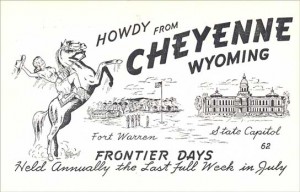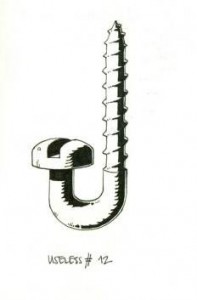 Do you have, or have you seen, grey horses with melanomas? I have – plenty. And, until now, there was really nothing much that could realistically be done. Oh sure, there were “options,” but other than repeated surgeries to remove lumps as they appeared, none of the options seemed to make much of a difference.* Until now.
Do you have, or have you seen, grey horses with melanomas? I have – plenty. And, until now, there was really nothing much that could realistically be done. Oh sure, there were “options,” but other than repeated surgeries to remove lumps as they appeared, none of the options seemed to make much of a difference.* Until now.
Skin – all skin – has pigment in it. The pigment is called melanin. Melanin is what causes human skin to tan in response to sunlight.. People have different amounts of melanin in their skin, and if you can’t tan well, you have less melanin in your skin that do other folks (hello, Ireland). The cells that produce melanin are called melanocytes. And uncontrolled growth – which is the definition of cancer – in this case, of melanocytes, is called melanoma.
Melanoma is a nasty disease in some creatures. It can be a devastating diagnosis in people, which is one reason why you should wear sunscreen. It’s quite commonly a very bad disease in dogs, as well, often starting as a tumor in the dog’s mouth, and rapidly spreading through the dog’s body.
In horses, a different animal, melanoma is generally, well, a different animal. In horses, melanomas are most commonly (though not necessarily always) associated with grey coat color. In fact, something along the lines of 80 per cent of grey horses are going to develop melanomas at some point in their lives. Heck, at that rate, it’s almost normal.
Melanomas show up as black lumps. They quite open show up in the unhaired areas, such as under the tail, or around the anus, or in the sheath of geldings, but you’ll see horses develop enlargements under the skin of just about anywhere, as well. Most commonly, they don’t spread throughout the horse’s body (tumors that act like that are called benign tumors), but they can spread throughout the horse’s body (tumors that spread are called malignant tumors). Mostly, they seem not to bother horses, at least initially. However, even benign tumors tend to grow, and they can really disfigure the areas in which they are growing. For example, you’ll see horses in which it’s difficult to see or even find the anus, and while that’s usually not a problem, sometimes the tumors can get so large as to make it hard for the horse to pass manure. Big tumors can become messy, too – they burst open, and ooze a black liquid (my apologies to the faint of heart).
Not all melanomas are the same. To find out more about them take a look at a wonderful article put out by The College of Veterinary Medicine at Purdue University in 2013; you can read it if you CLICK HERE. Really good information, and lots of references that can be found on-line, if you’re so-inclined. I’d encourage you to take a look at it.
As I mentioned at the start, there have been a lot of different things tried for the treatment of melanomas in horses, which have all had one thing in common – they mostly don’t work very well (if at all). Other than surgery, which, in addition to the expense, can be tedious, awkward, and locally destructive, especially if the tumors are large, horse owners (and their frustrated veterinarians) had to mostly just sit back and watch the tumors grow. But maybe that’s about to change.
In 2007, a vaccine was approved for the treatment of canine (dog) melanomas. Vaccination against cancer has been something of a holy grail in cancer therapy. The problem with trying to come up with a vaccine against cancers is that, to the immune system, cancer cells look just like all of other cells in the horse’s body. Really, there’s nothing abnormal about a cancer cell, other than it grows uncontrollably (which, admittedly, is a very bad thing). Since cancer cells are so (mostly) normal, the horse’s immune system doesn’t recognize them as a problem, unilke, say, virus particles, or bacteria, or tetanus toxin. The body typically doesn’t mount an immune-defense against cancer cells.
 But, turns out that there is something different about melanoma cells. They have a large amount of an enzyme called tyrosinase. Tyrosinase is very important in controlling the rate of the horse’s body’s production of melanin. If its activity is uncontrolled, it results in increased production of melanin: and melanoma. And even though tyrosinase is a normal protein, and the body doesn’t recognize it as anything strange, or in need of an immune response, researchers have been able to “trick” the dog’s body (and, apparently, the horse’s body, too) into mounting an immune response against it.
But, turns out that there is something different about melanoma cells. They have a large amount of an enzyme called tyrosinase. Tyrosinase is very important in controlling the rate of the horse’s body’s production of melanin. If its activity is uncontrolled, it results in increased production of melanin: and melanoma. And even though tyrosinase is a normal protein, and the body doesn’t recognize it as anything strange, or in need of an immune response, researchers have been able to “trick” the dog’s body (and, apparently, the horse’s body, too) into mounting an immune response against it.
How?
 They’ve made a vaccine with a human gene for tyrosinase in it. The gene is put into a small ring of DNA. The human tyrosinase is different enough from the tyrosinase found in dogs that it results in an immune response from the dog, but it’s close enough to canine tyrosinase that the immune response that’s stimulated also works specifically against the dog protein. And while there’s tyrosinase in most all of the skin cells of the dog’s body, melanomas produce a lot more of it, so the immune response is able to target the cancer cells pretty specifically.
They’ve made a vaccine with a human gene for tyrosinase in it. The gene is put into a small ring of DNA. The human tyrosinase is different enough from the tyrosinase found in dogs that it results in an immune response from the dog, but it’s close enough to canine tyrosinase that the immune response that’s stimulated also works specifically against the dog protein. And while there’s tyrosinase in most all of the skin cells of the dog’s body, melanomas produce a lot more of it, so the immune response is able to target the cancer cells pretty specifically.
Isn’t science cool?
It wasn’t a great leap to wonder if there were similarities between canine and equine melanomas. A few years back, I became aware of research being done with the vaccine on horses at the University of Tennessee (home state of my Mom and Dad) by Dr. Jeff Phillips. The Morris Animal Foundation just published a press release on the results – CLICK HERE to read it. I’ve spoken to Dr. Phillips a couple of times, and based on the results of the research, the very plausible biological mechanism of action, and as my two conversations with Dr. Phillips, I think that it’s probably worth trying if you’re so inclined (and if you have the money – it’s reasonably expensive).
 The vaccine must be obtained from either an oncologist or a small animal internal medicine specialist, which means that your veterinarian may have to jump through a few hoops to get it. But if you have a horse with melanomas, the vaccine does appear to be a reasonable option to at least prevent further growth of existing tumors, and, in some cases, cause them to regress (that is, to go away). I think that it’s pretty likely that vaccination will be a life-long therapy for horses that respond.
The vaccine must be obtained from either an oncologist or a small animal internal medicine specialist, which means that your veterinarian may have to jump through a few hoops to get it. But if you have a horse with melanomas, the vaccine does appear to be a reasonable option to at least prevent further growth of existing tumors, and, in some cases, cause them to regress (that is, to go away). I think that it’s pretty likely that vaccination will be a life-long therapy for horses that respond.
So, there you go. Maybe some hope on the horizon. Remember, the product isn’t licensed for horses yet, but it probably will be. If you’re interested, ask your veterinarian to find out more. As time goes on, we’ll learn more about how effective this treatment is, as it gets used in more horses. But for now, it seems like we at last have a realistic option to control the growth of these tumors, at least in some horses.
*****************************************************************************************************************************
 * The word “options,” apparently has different meanings for different people. I think it should mean, “Another way to get you where you want to go.” However, as often used in medicine (not just horse medicine), it often seems more likely to mean, “Something else on which can spend your money.” So, for example, Interstate 80, which runs across the upper United States from east to west, is a good option if you want to drive from, say, Lincoln, Nebraska to Cheyenne, Wyoming (why you would want to make such a drive is another question). However, while Interstate 75, which runs from north-south in the eastern United States is unquestionable a road, it isn’t a legitimate “option” if you want to make the trip from Lincoln to Cheyenne. If you think that I’m “closed-minded” in saying this, look at a map.
* The word “options,” apparently has different meanings for different people. I think it should mean, “Another way to get you where you want to go.” However, as often used in medicine (not just horse medicine), it often seems more likely to mean, “Something else on which can spend your money.” So, for example, Interstate 80, which runs across the upper United States from east to west, is a good option if you want to drive from, say, Lincoln, Nebraska to Cheyenne, Wyoming (why you would want to make such a drive is another question). However, while Interstate 75, which runs from north-south in the eastern United States is unquestionable a road, it isn’t a legitimate “option” if you want to make the trip from Lincoln to Cheyenne. If you think that I’m “closed-minded” in saying this, look at a map.









